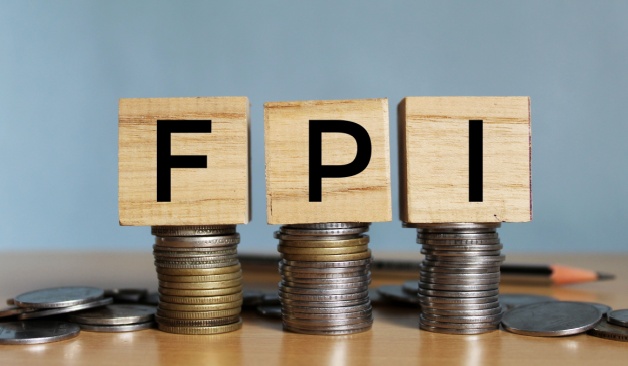
FPI inflow in the Indian market dipped in 2024
Foreign Portfolio Investors (FPIs) inflow into the Indian markets declined in 2024. But why FPIs inflow declined, and what is the outlook for 2025? We will answer these questions in this article.
FPI Inflow: 2023 vs 2024
As of 24 December, foreign portfolio investors (FPIs) have made a net investment of Rs 5052 crore in the Indian equity market. In the debt market, the net inflow was Rs 1.12 lakh crore.
In 2024, the FPI outflow was seen in five months - January, April, May, October, and November. The financial services sector experienced the highest outflows, with Rs 54,500 crore outflow, followed by the oil & gas sector (Rs 50,000 crore) and fast-moving consumer goods (FMCG), with Rs 20,000 crore.
These numbers are lesser than the 2023 numbers. In 2023, the Indian equity market saw Rs 1.71 lakh crore net investment in equities. In 2022, net outflow of Rs 1.21 lakh crore due to aggressive rate hikes by global central banks.
Why did the FPI inflow decline in 2024?
The decline in FPIs into Indian equities was driven by a mix of global and domestic factors that dampened investor sentiment collectively. Let us look at the details:
Global Factors Influencing FPI Decline
- Elevated Valuations and Shift to Chinese Equities: The high valuations of Indian equities have been a critical factor in reduced FPI flows. These elevated valuations prompted investors to pivot toward Chinese equities, which offered more attractive valuations. This shift was further encouraged by China’s aggressive stimulus measures aimed at reviving economic growth. These initiatives included fiscal incentives, monetary easing, and industrial support policies, which enhanced the appeal of Chinese markets to global investors seeking better risk-adjusted returns.
- Geopolitical Tensions and Risk Aversion: Heightened geopolitical tensions, particularly the ongoing Israel-Iran conflict, have contributed to increased global uncertainty. It has driven investors toward safer asset classes such as gold and US Treasury bonds, thereby reducing inflows into emerging markets like India.
- US Presidential Election and Federal Reserve Policy Concerns: The US election had created an air of caution among global investors, leading to a "wait-and-see" approach. Moreover, despite the US Federal Reserve implementing 100 basis points of rate cuts in 2024, concerns about fewer rate cuts in 2025 have further tempered investor enthusiasm for emerging markets, including India.
Domestic Factors Impacting FPI Sentiment
- High Valuations and Weak Corporate Earnings: Domestically, the elevated valuations of Indian equities have deterred FPIs from increasing their exposure. Additionally, weak corporate earnings during the September quarter and subdued expectations for the December quarter have raised concerns about the near-term profitability of Indian companies.
- Rising Inflation and Slower GDP Growth: Inflationary pressures have re-emerged in 2024, driven by higher commodity prices and supply chain disruptions. Slower GDP growth has further compounded the issue, eroding confidence in India’s economic prospects and reducing the attractiveness of its equity markets to foreign investors.
- Depreciating Rupee: The Indian rupee’s depreciation against the US dollar has added another layer of uncertainty for FPIs. A weaker rupee not only erodes returns for foreign investors but also signals potential macroeconomic instability, which deters long-term investments.
Way Forward
To revive FPI interest, policymakers and market participants need to address concerns around valuations and earnings growth. Additionally, improving macroeconomic indicators such as inflation and currency stability will play a crucial role in attracting foreign investments in the future.
As we turn the page to 2025, there is optimism that Foreign Portfolio Investment (FPI) flows into Indian equities may experience a recovery. Several factors may contribute to this potential rebound, particularly a cyclical upswing in corporate earnings and opportunities within domestic-oriented sectors. Here is a closer look at the key drivers:
- Corporate earnings are expected to gain momentum in 2025, driven by strong demand recovery and improved profitability across various sectors.
- The government’s commitment to policy reforms aimed at boosting economic growth will play a critical role in improving investor confidence.
- Easing inflation and a stable interest rate environment may create a favorable macroeconomic backdrop for equity investments.
Before you go
While global factors such as geopolitical tensions and US monetary policy uncertainties may continue to influence FPI flows, the confluence of domestic growth drivers presents a strong case for a rebound in foreign investments.










